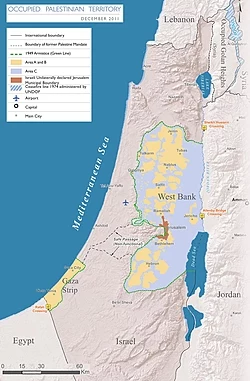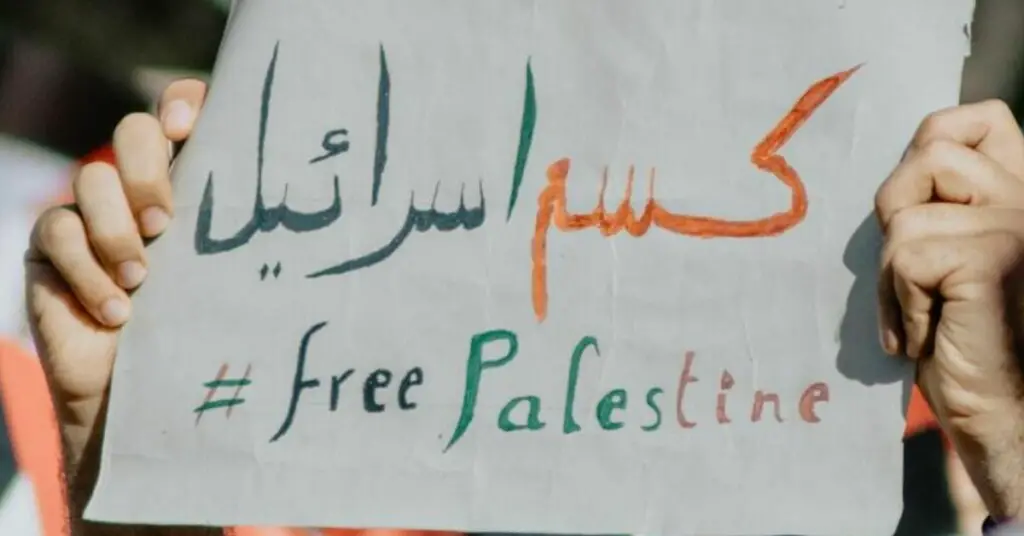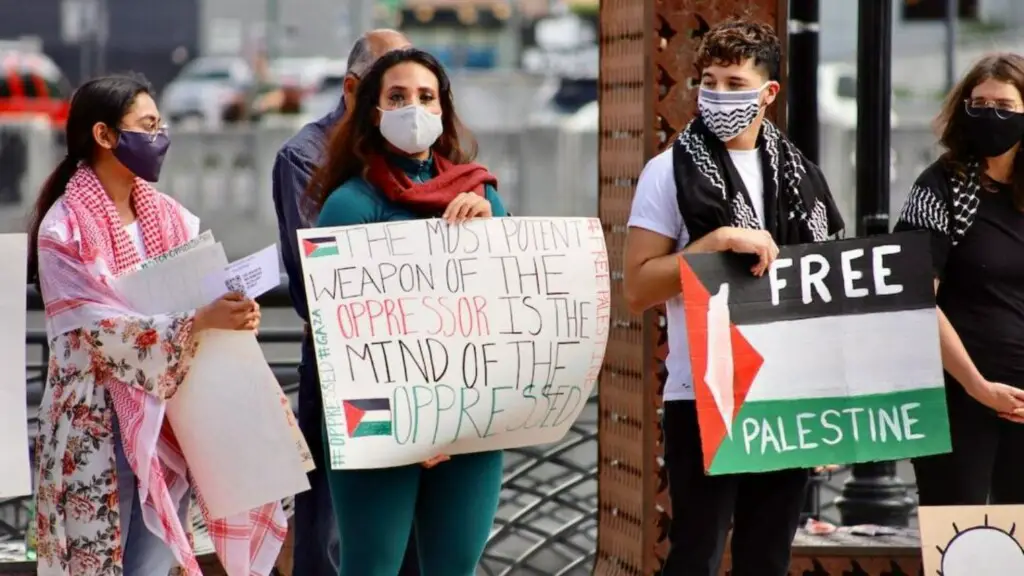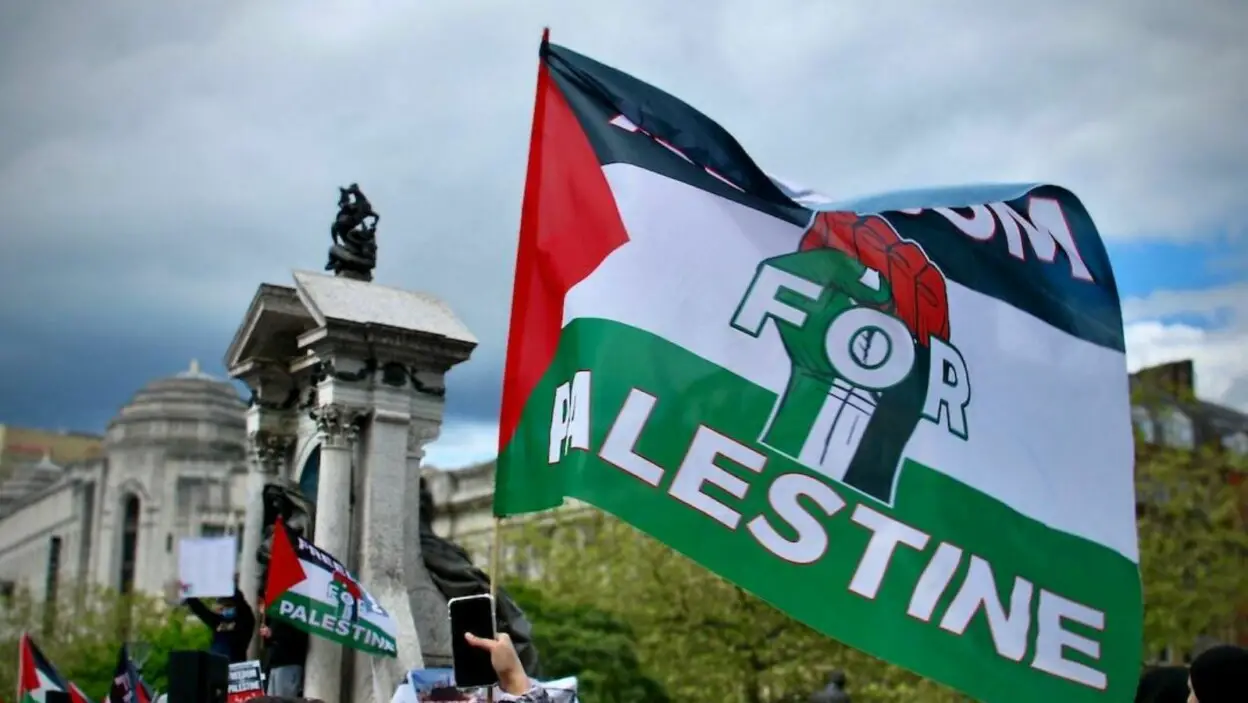The Israeli-Palestinian conflict is a complex and enduring dispute that has spanned over a century, shaping the political, social, and humanitarian landscape of the Middle East. Rooted in historical grievances, territorial disputes, and competing national aspirations, this conflict has evoked passionate emotions and generated international attention.
This blog post aims to provide a detailed overview of the Israeli-Palestinian conflict, delving into its historical origins, key events, major actors, and potential pathways to resolution.
Historical Background

Source: https://en.wikipedia.org/wiki/Israeli%E2%80%93Palestinian_conflict
The origins of the Israeli-Palestinian conflict can be traced back to the late 19th and early 20th centuries. Several key factors contributed to the conflict’s emergence:
- Zionism: In the late 19th century, the Zionist movement emerged among Jewish communities in Europe. It advocated for the establishment of a Jewish homeland in Palestine, which was then part of the Ottoman Empire. Theodor Herzl, a prominent figure in the Zionist movement, is often considered the father of modern political Zionism.
- British Mandate for Palestine: After World War I, the League of Nations granted Britain the mandate to govern Palestine. During this time, Jewish immigration to Palestine increased, leading to tensions between Jewish and Arab communities.
- 1947 UN Partition Plan: In 1947, the United Nations proposed a partition plan to divide Palestine into separate Jewish and Arab states, with Jerusalem under international administration. While Jewish leaders accepted the plan, Arab leaders rejected it, leading to the 1948 Arab-Israeli War.
Key Events and Phases

Source: https://en.wikipedia.org/wiki/Israeli%E2%80%93Palestinian_conflict
- 1948 Arab-Israeli War: Also known as the War of Independence or Nakba (catastrophe), this conflict resulted in the establishment of the State of Israel and the displacement of hundreds of thousands of Palestinian Arabs. The consequences of this war continue to shape the conflict’s dynamics today.
- Six-Day War (1967): Israel’s victory in this brief war led to its occupation of the West Bank, Gaza Strip, Sinai Peninsula, and Golan Heights. The status of these territories remains a major point of contention.
- First and Second Intifadas: Palestinian uprisings in the late 1980s and early 2000s marked significant periods of unrest and violence in the conflict. These events highlighted the frustration and resistance of Palestinian populations living under Israeli occupation.
- Peace Process: Numerous attempts have been made to achieve a peaceful resolution to the conflict, including the Oslo Accords in the 1990s and the Camp David Summit in 2000. While these efforts resulted in limited progress, a comprehensive peace agreement remains elusive.
Major Actors

- Israel: A sovereign state since 1948, Israel is a central actor in the conflict. Its government and military have played pivotal roles in shaping the course of events.
- Palestinian Authority (PA): The PA was established following the Oslo Accords and has limited self-governing authority in parts of the West Bank. However, it faces challenges in fully controlling its territories.
- Hamas: A Palestinian militant group, Hamas controls the Gaza Strip and is considered a terrorist organization by Israel, the United States, and the European Union. It has been a key player in Gaza since winning elections there in 2006.
- International Community: Various international actors, including the United States, the United Nations, the European Union, and Arab states, have been involved in mediating peace efforts and providing humanitarian assistance to Palestinians.
Humanitarian Dimensions

The Israeli-Palestinian conflict has had profound humanitarian consequences:
- Refugees: Millions of Palestinian refugees and their descendants are scattered throughout the Middle East, with many living in refugee camps. The right of return for these refugees remains a contentious issue.
- Gaza Blockade: The Gaza Strip has faced a severe blockade since 2007, leading to economic hardship, limited access to basic necessities, and restricted movement for its population.
- Settlements: The construction of Israeli settlements in the West Bank has been a source of tension. Critics argue that these settlements undermine the possibility of a two-state solution.
- Human Rights: Human rights organizations have documented abuses committed by both Israeli security forces and Palestinian militant groups, raising concerns about the well-being of civilians caught in the crossfire.
Pathways to Resolution

Achieving a lasting resolution to the Israeli-Palestinian conflict remains a formidable challenge. Some potential pathways include:
- Two-State Solution: The establishment of an independent Palestinian state alongside Israel, based on pre-1967 borders, has long been a favored solution by the international community.
- One-State Solution: Some advocate for a single, democratic state where Jews and Palestinians have equal rights. However, this option raises concerns about demographics and political power-sharing.
- Negotiations and Diplomacy: Renewed peace negotiations, supported by the international community, may be the most practical path to a peaceful resolution.
- Grassroots Initiatives: Civil society efforts, including dialogue and reconciliation programs, can help build trust and understanding between Israelis and Palestinians.
Conclusion
The Israeli-Palestinian conflict is a deeply rooted and multifaceted issue with profound consequences for both the region and the world. It is crucial to continue dialogue, foster understanding, and work toward a just and lasting resolution that respects the rights and aspirations of both Israelis and Palestinians. Ultimately, a peaceful resolution to this longstanding conflict would bring much-needed stability and hope to the Middle East.








